Best Gothic Cathedrals in Europe to Visit
Exploring the best Gothic cathedrals in Europe is a fantastic way to learn more about architecture, history, and religion.
From Notre Dame, which is probably the most famous example of Gothic architecture, to less-known ones such as the Malaga Cathedral, this list covers cathedrals all across Europe to make sure you will be able to visit at least one wherever you go on your next trip!
The Gothic style is probably the most recognizable and iconic one, and although many people know about it, few of them know exactly what the Gothic style is.
For this, I have made this guide explaining what a Gothic Cathedral is.
Do check this guide out before we dive into the best Gothic cathedral examples listed below.

Disclosure: This post does contain affiliate links through which I earn a small commission at no extra cost to you. Any purchases you make through my links help keep the site running. Thanks in advance for your support!
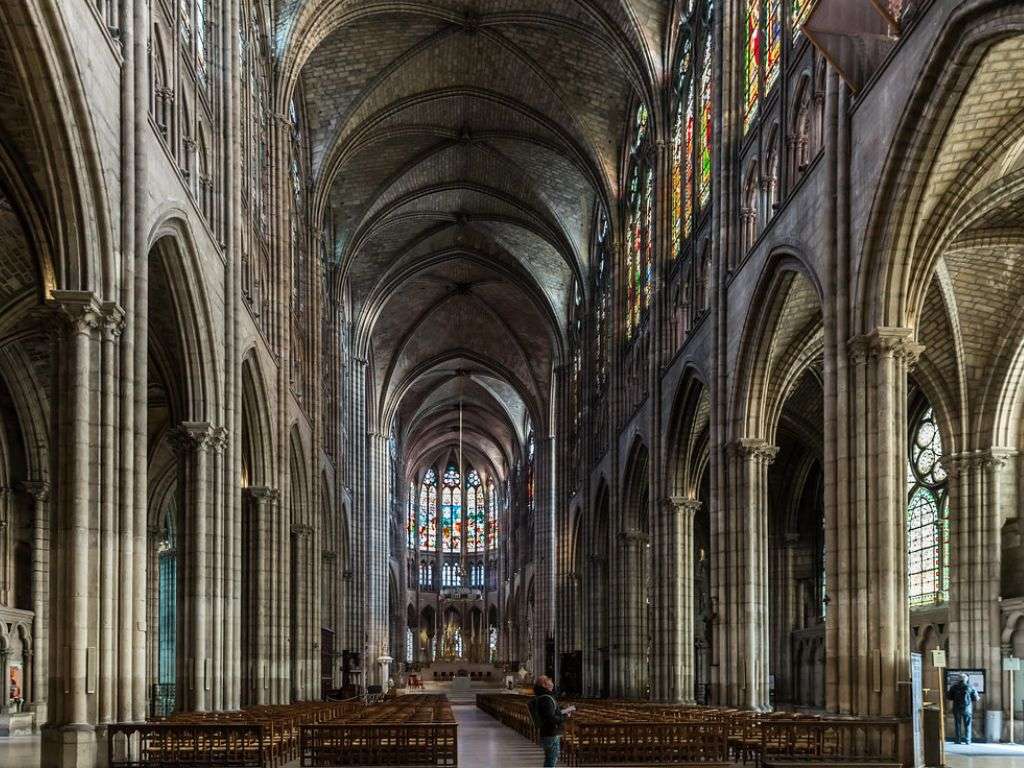
Saint-Denis Cathedral
Saint-Denis Cathedral in Paris is the first Gothic cathedral ever built.
In 475 AD, the abbey of Saint-Denis was erected on this site, a wooden structure that was partially rebuilt in the 12th century to accommodate the ever-growing number of pilgrims who visited the site every year.
Abbot Suger, then abbot of Saint-Denis Cathedral, decided to add some innovative structures and decorative motifs, leading the path to what we know today as the Gothic Style.
Saint-Denis Cathedral’s historical importance goes beyond its architecture and the fact that it is the oldest Gothic cathedral, as it also served as a royal cemetery from the 10th century to the 19th century.
Saint-Denis Cathedral is also famous for being the resting place of Queen Marie Antoinette and her husband, King Luis XV, who died on the guillotine during the French Revolution.
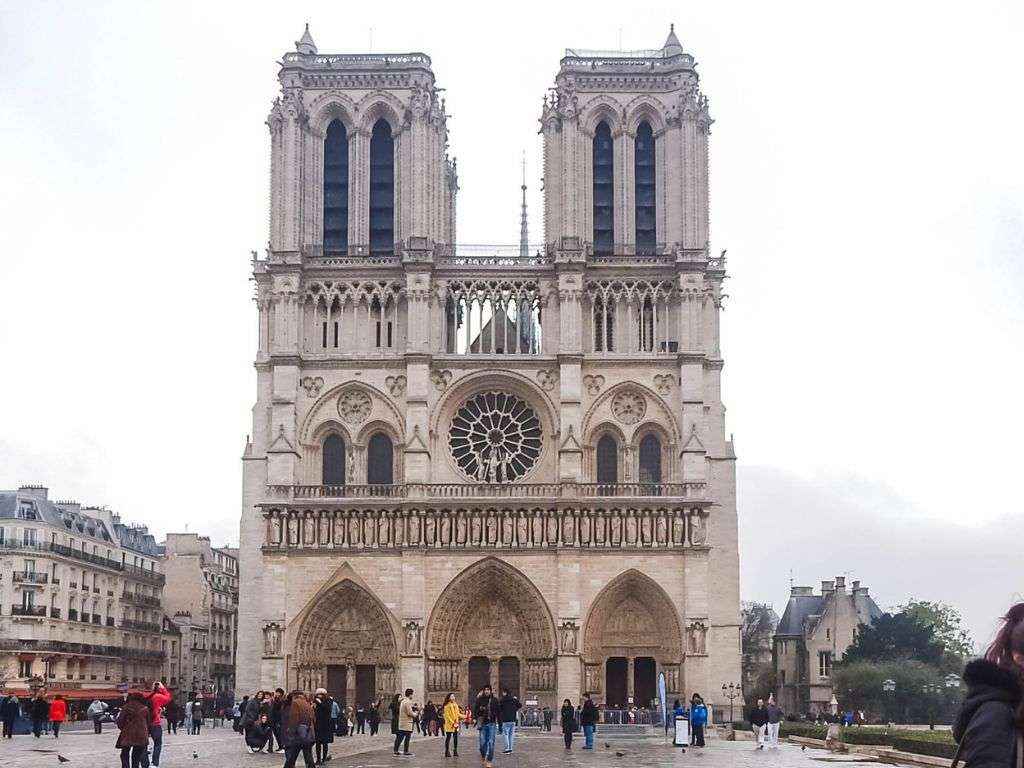
Notre Dame Cathedral de Paris
This iconic landmark of Paris is one of the best examples of French Gothic architecture.
It was the first Gothic church to have a rib vault and flying buttress, two attributes that became very characteristic of the Gothic style.
Another highlight of its Gothic architecture is the rose windows.
Notre Dame has one rose window on each side of the church, with stained glass depicting scenes of the gospels, angels, and saints.
To learn more about Paris, check out this 3 day guide to Paris, which covers Notre Dame Cathedral and also Sainte-Chapelle, another great example of Gothic architecture.
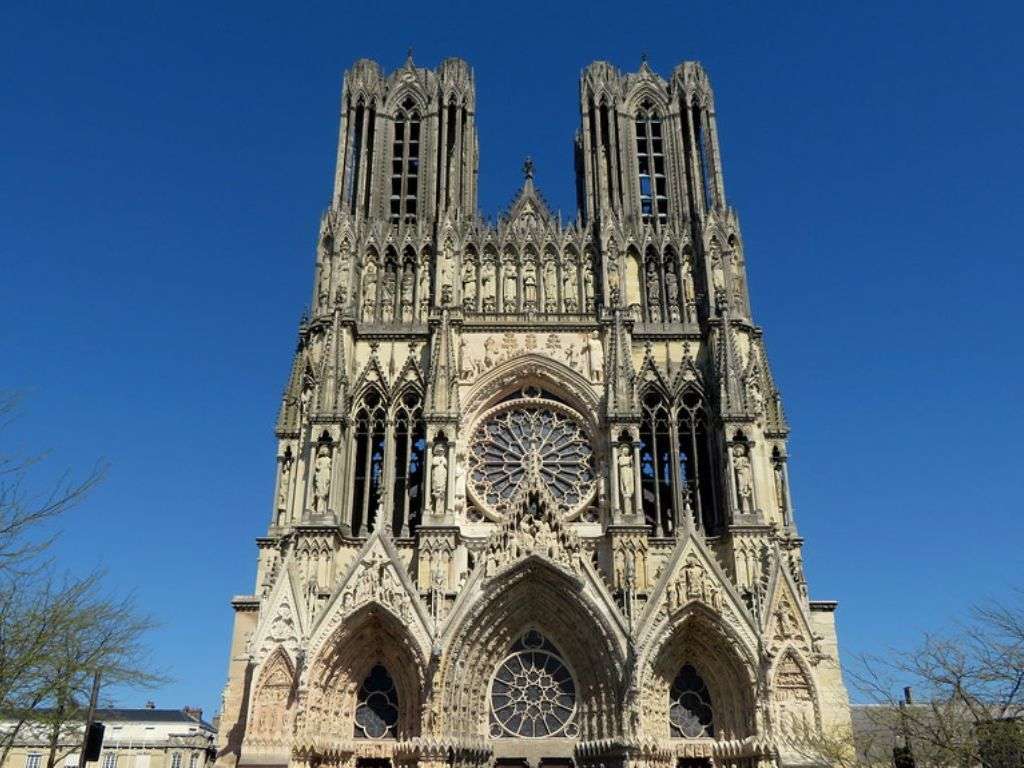
Reims Cathedral
Reims Cathedral, although not as famous, is one of the most important churches in France. It was here that the coronation took place for over 1,000 years.
It was founded in the 5th century, but the building we see today was designed in the 13th century in a Gothic style to replace the old medieval church that was destroyed by a fire in 1210.
Why were French kings crowned in Reims? Clovis, King of Franks, was baptized here by St Remigius, bishop of Reims, in 498, becoming the West’s first catholic sovereign. Clovis is considered the first king of France, and although he was not crowned here, his baptism was the first time a Royal Anointing took place in Reims Cathedral, opening the path to this tradition.

Sainte-Chapelle
Sainte-Chapelle is one of the most beautiful examples of Gothic architecture, famous for its breathtaking stained glass windows and exquisite decoration.
Originally built in the 13th century, Sainte-Chapelle was part of the medieval Palais de la Cité, the residence of the French kings until the 14th century.
While the palace no longer stands, Sainte-Chapelle resisted the passage of the centuries and can still be visited today.
The chapel is now located within the Palais de Justice complex, surrounded by the hustle and bustle of modern Paris.
What truly sets Sainte-Chapelle apart is its remarkable stained glass windows, which cover a staggering 6,458 square feet and depict scenes from the Bible, including the Old and New Testaments.
These intricate windows, illuminated by natural light, create a mesmerizing kaleidoscope of colors that bathe the interior in a heavenly glow.

Canterbury Cathedral
One of the oldest churches in England. Canterbury was founded in 597 but rebuilt in a Gothic style in the 12th century when a fire partially destroyed the old structure.
The style as well as the new techniques were brought by a master stonemason coming from France to Canterbury.
With its high ceiling, tall windows decorated with fine stained glass telling religious stories, and buttresses outside the cathedral, Canterbury is one of the finest and oldest examples of Gothic architecture in England.
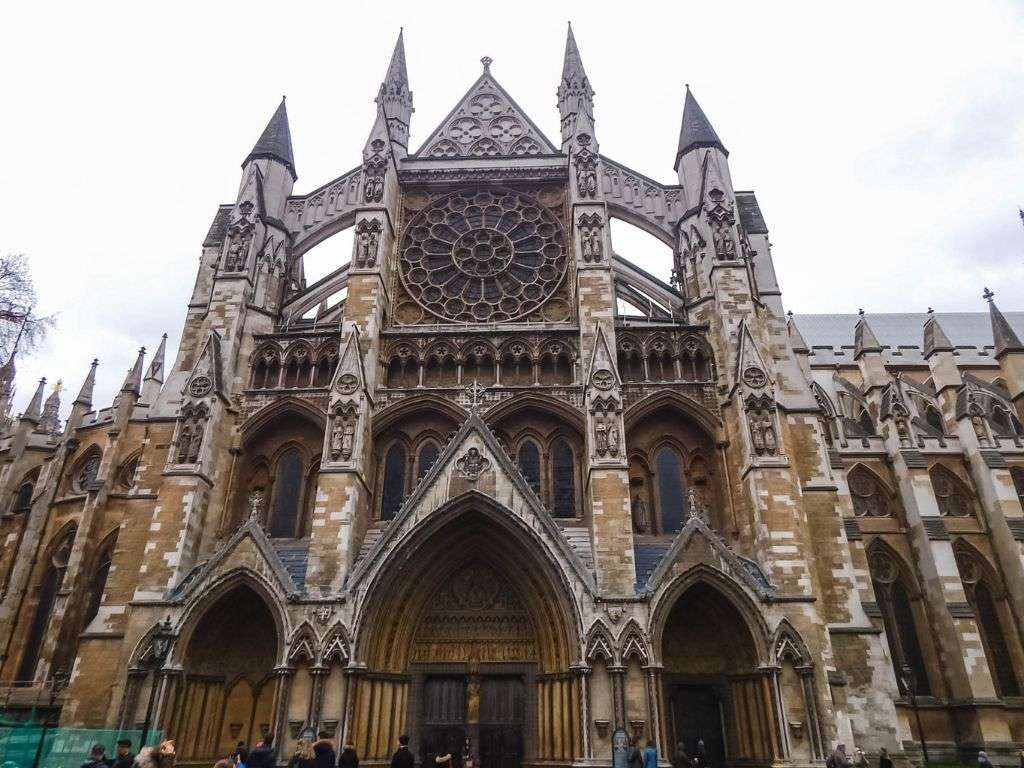
Westminster Abbey
Westminster Abbey was rebuilt by orders of King Henry III in 1245, using the French Gothic style, highly influenced by Reims Cathedral in France.
Different from the French Gothic, the English Gothic style emphasizes elaborated towers, with many pinnacles and statues, while the towers of the French Gothic style tend to be simpler.
Westminster Abbey, though, didn’t have towers until the 18th century.
Westminster Abbey is one of the main tourist points in London, and we cover it and much more in this 3 days guide to London for beginners.
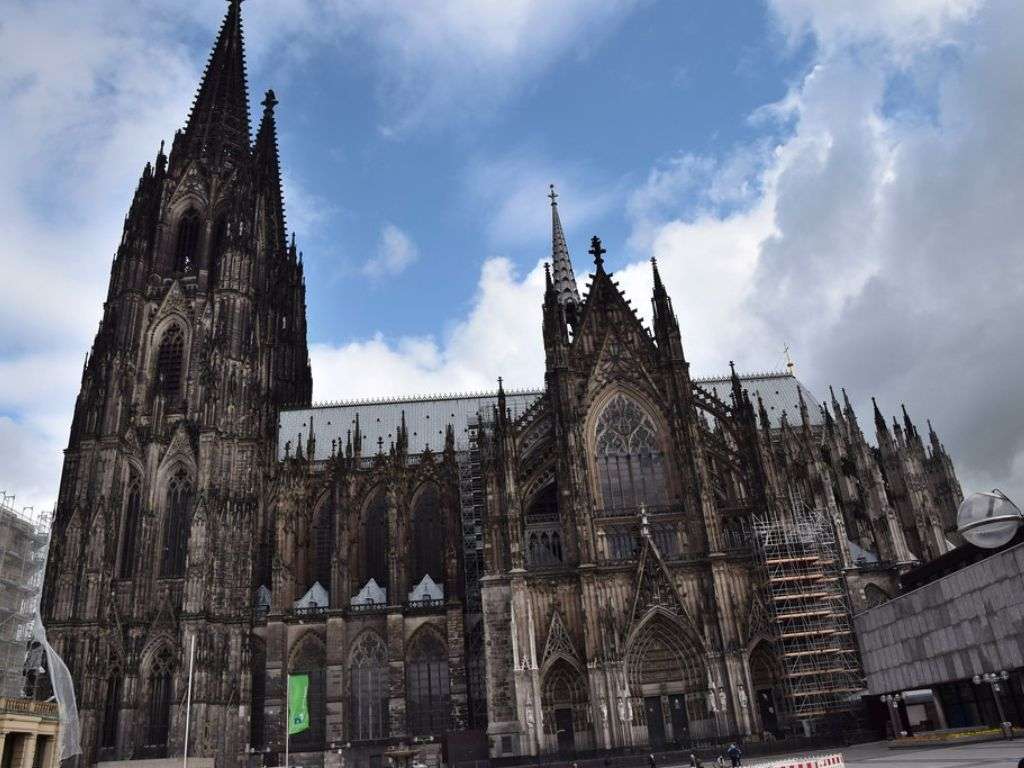
Cologne Cathedral
Cologne Cathedral is the second-tallest church in Germany and one of the most visited sites in the country.
Its construction began in 1164, when the Archbishop of Cologne, Rainald of Dassel, acquired the relics of the Three Kings and saw a necessity to rebuild the local church that was too small to receive the pilgrims.
Looking for a new style to use in the rebuild program, the project began with a Gothic architecture influenced by the Amiens Cathedral in France.
Although the program was paused many times during the years, the church was completed in 1880 using the original Gothic style plan.
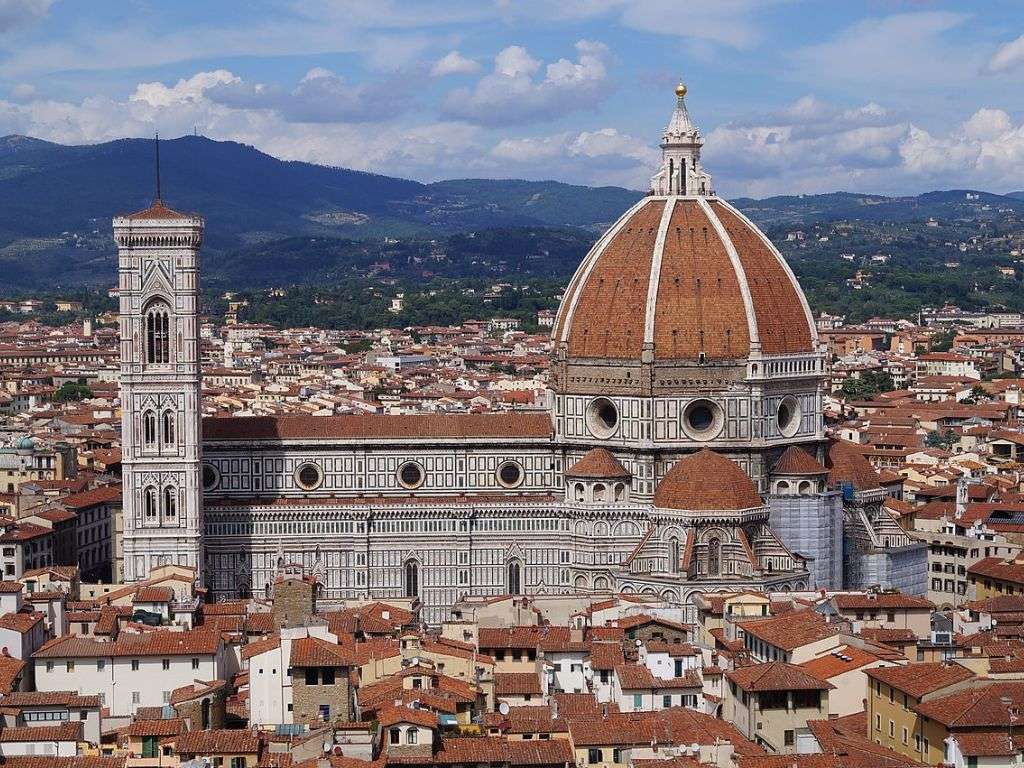
Santa Maria del Fiore
Santa Maria del Fiore is a good example of the Italian Gothic style. Although very different from the French Gothic style, some Gothic elements, such as a pointed arch and cross-ribbed vault, are notable.
The construction of the Santa Maria del Fiore began in 1296 and took 140years to be completed.
Besides its importance in the development of Italian Gothic architecture, Santa Maria del Fiore also stands out for its dome, as it was the first octagonal dome built without a temporary wooden support frame in history.
For years, it was considered the biggest dome in the world.
Check out our Guide for 2 days in Florence, which covers Florence Cathedral and many more interesting places to visit in Florence.

Milan Cathedral
The largest church in Italy and one of the most dramatic as well.
The Milan Cathedral is famous for its extravagant façade, with many pinnacles and statues.
The construction of the Milan Cathedral began in 1386.
At first, the engineers intended to build it in Lombard Gothic style, but ended up opting for the newest trend, following the Cologne Cathedral and the Sainte-Chapelle in Paris, the Rayonnant Gothic style.
Candoglia marble was chosen for the construction, instead of the traditional Lombard bricks, which completely revolutionized the Gothic architecture in Italy.
As a result, architects, sculptors, and stone-cutters were brought from all over Europe to help in the development of this project.
The cathedral was only fully completed in 1965.
Milan Cathedral can be easily visited during a long layover in Milan, so don’t miss the chance. If you are passing by the city, do take your time to visit this iconic Gothic cathedral.
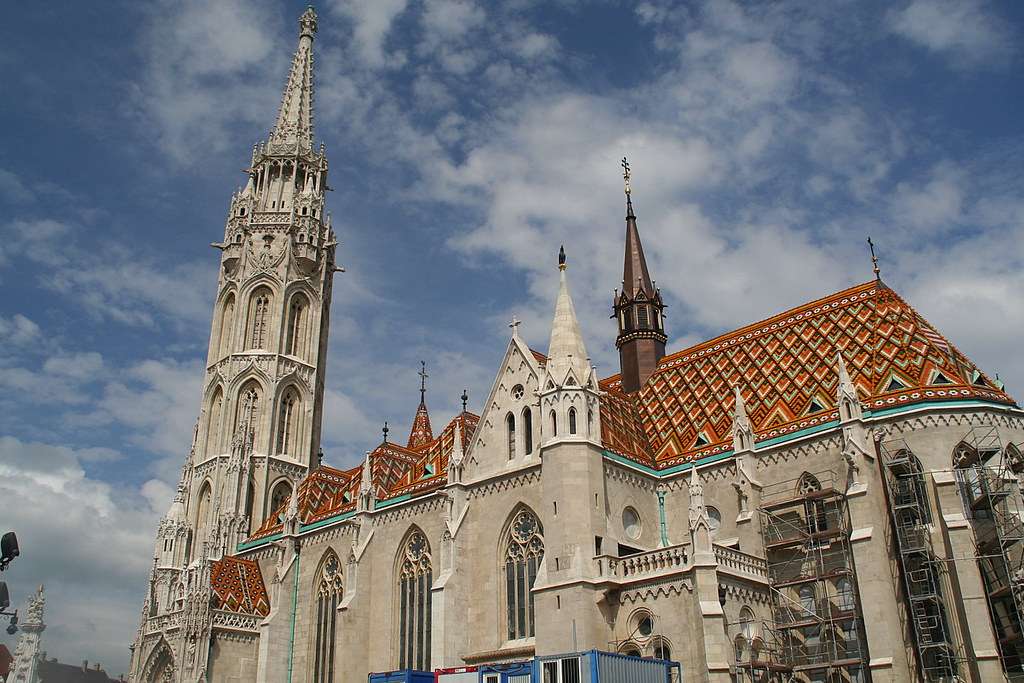
Matthias Church
The Matthias Church, in Budapest, is another example of stunning Gothic architecture with a rich history dating back to the 14th century.
Originally built in the early 14th century, the church underwent several renovations and reconstructions over the centuries, with its current form largely reflecting the work done in the late 19th century under the direction of architect Frigyes Schulek.
One of the most striking features of the Matthias Church is its intricate exterior adorned with colorful ceramic tiles and richly carved stone details.
Although mostly Gothic, the façade showcases a mix of Gothic, Romanesque, and Baroque styles.
But the inside of this church can leave anyone speechless.
It is completely adorned with frescos and stained glass, its columns are intricately adorned, and the altars are very detailed. In my opinion, the most beautiful Gothic church I have ever seen is.
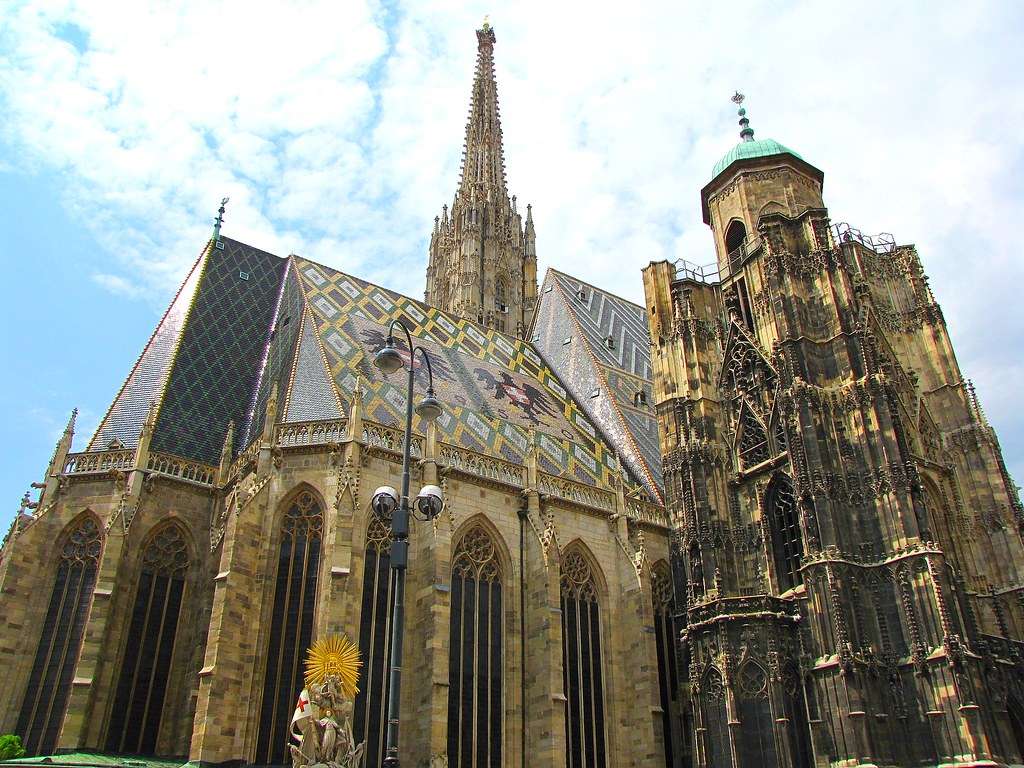
St. Stephen’s Cathedral
St. Stephen’s Cathedral, or Stephansdom, is a magnificent Gothic masterpiece located in the heart of Vienna, Austria.
Its construction dates back to the 12th century, however, the cathedral as it stands today, reflects the architectural style of the 14th century, with subsequent renovations and additions over the years.
The construction of St. Stephen’s Cathedral began in 1137, although it wasn’t until the 14th century that the iconic South Tower, known as the “Steffl,” was completed.
Rising to a height of 136 meters (446 feet), the South Tower dominates the Vienna skyline and offers panoramic views of the city for those brave enough to climb its 343 steps.
Inside the cathedral, visitors are greeted by a breathtaking interior filled with treasures of religious art and architecture.
The nave is lined with towering stone columns and vaulted ceilings, creating a sense of grandeur and majesty.
The High Altar, located at the eastern end of the cathedral, is a masterpiece of Baroque design, adorned with sculptures and gilded accents.
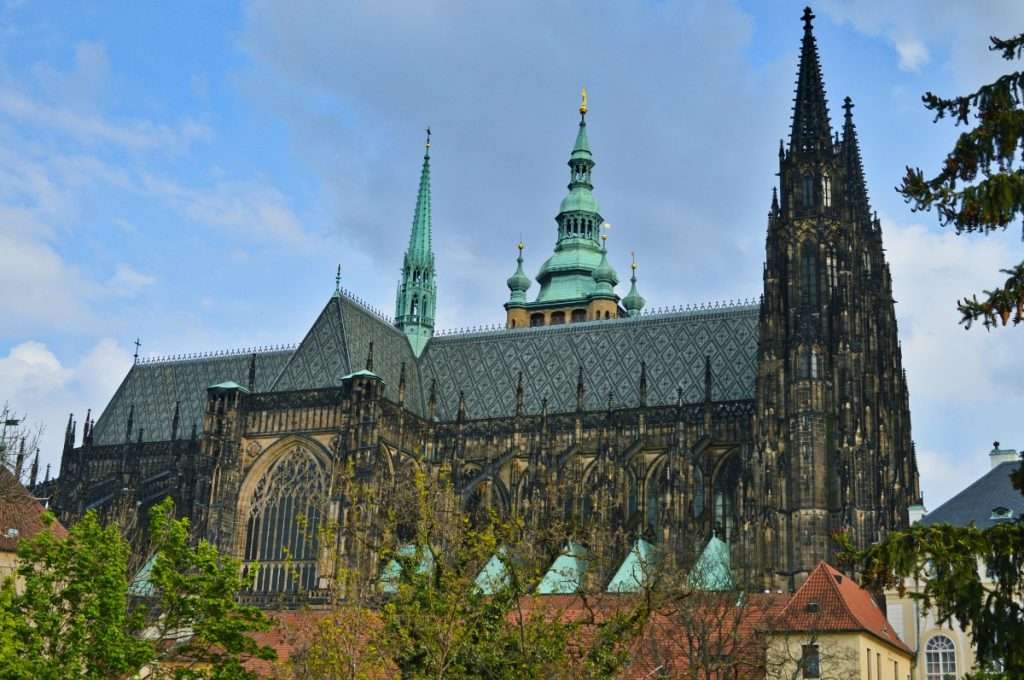
St. Vitus Cathedral
St. Vitus Cathedral, located within the Prague Castle complex in Prague, is one of the most important religious landmarks in the country.
Construction of the cathedral began in the 14th century, although it wasn’t completed until the 20th century, with various architects contributing to its design over the centuries.
One of the most iconic features of St. Vitus Cathedral is its soaring spires, which make it one of the city’s most recognizable landmarks.
The cathedral’s façade is adorned with intricate stone carvings, statues, and reliefs, showcasing the skill and craftsmanship of its builders.
The interior is adorned with stunning stained glass windows, some of which date back to the 14th century, depicting scenes from the Bible and the lives of saints.

Seville Cathedral
The Cathedral stands today on the site of a Moorish mosque; the building was converted to a Catholic church in 1248 following the city’s conquest by Ferdinand III.
A great part of the old building was then destroyed, and a new one was erected in 1403.
Gothic architecture was chosen for the project; however, the presence of Moorish elements, part of the legacy of the church’s past, gives it a unique appearance.
Conclusion
From France to Spain, Germany to the Czech Republic, Gothic cathedrals continue to impress visitors with their grandeur, complexity, and spiritual ambiance.
These structures aren’t just relics of the past; they are living monuments that still serve as places of worship, cultural landmarks, and symbols of the cities that surround them.
Each cathedral tells its own story, shaped by the artists, architects, and communities that contributed to its construction over centuries.
If you’re planning a trip through Europe, make time to step into at least one of these Gothic marvels.
Beyond their architectural significance, they offer a moment of quiet reflection amid the bustle of travel, a reminder of how art, devotion, and human ingenuity can come together to create something truly timeless.
This text was originally written and posted in September 2023 and updated in October 2024. New information has been added, and links have been updated so that it could offer a better experience to the reader.





